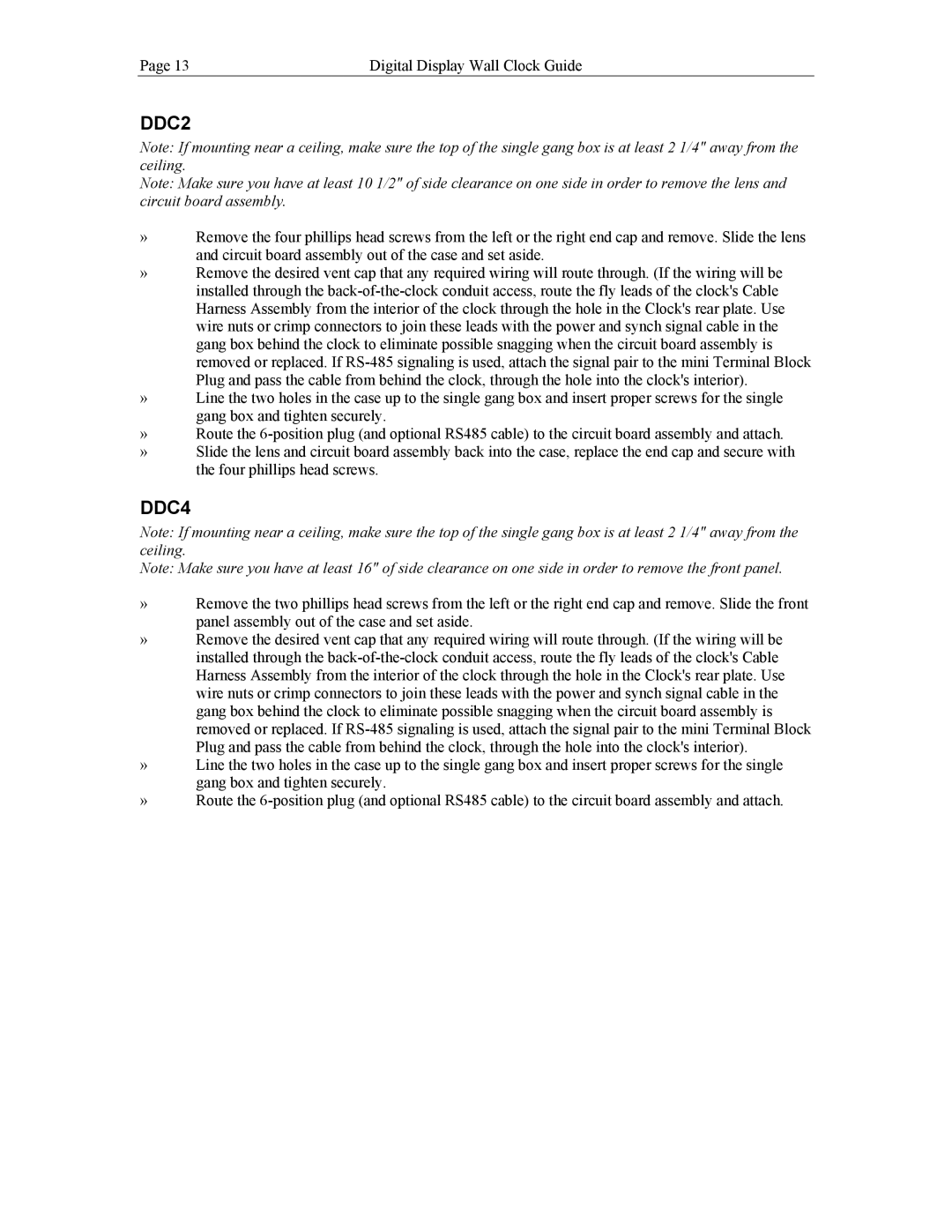Page 13 | Digital Display Wall Clock Guide |
DDC2
Note: If mounting near a ceiling, make sure the top of the single gang box is at least 2 1/4" away from the ceiling.
Note: Make sure you have at least 10 1/2" of side clearance on one side in order to remove the lens and circuit board assembly.
»Remove the four phillips head screws from the left or the right end cap and remove. Slide the lens and circuit board assembly out of the case and set aside.
»Remove the desired vent cap that any required wiring will route through. (If the wiring will be installed through the
»Line the two holes in the case up to the single gang box and insert proper screws for the single gang box and tighten securely.
»Route the
»Slide the lens and circuit board assembly back into the case, replace the end cap and secure with the four phillips head screws.
DDC4
Note: If mounting near a ceiling, make sure the top of the single gang box is at least 2 1/4" away from the ceiling.
Note: Make sure you have at least 16" of side clearance on one side in order to remove the front panel.
»Remove the two phillips head screws from the left or the right end cap and remove. Slide the front panel assembly out of the case and set aside.
»Remove the desired vent cap that any required wiring will route through. (If the wiring will be installed through the
»Line the two holes in the case up to the single gang box and insert proper screws for the single gang box and tighten securely.
»Route the
